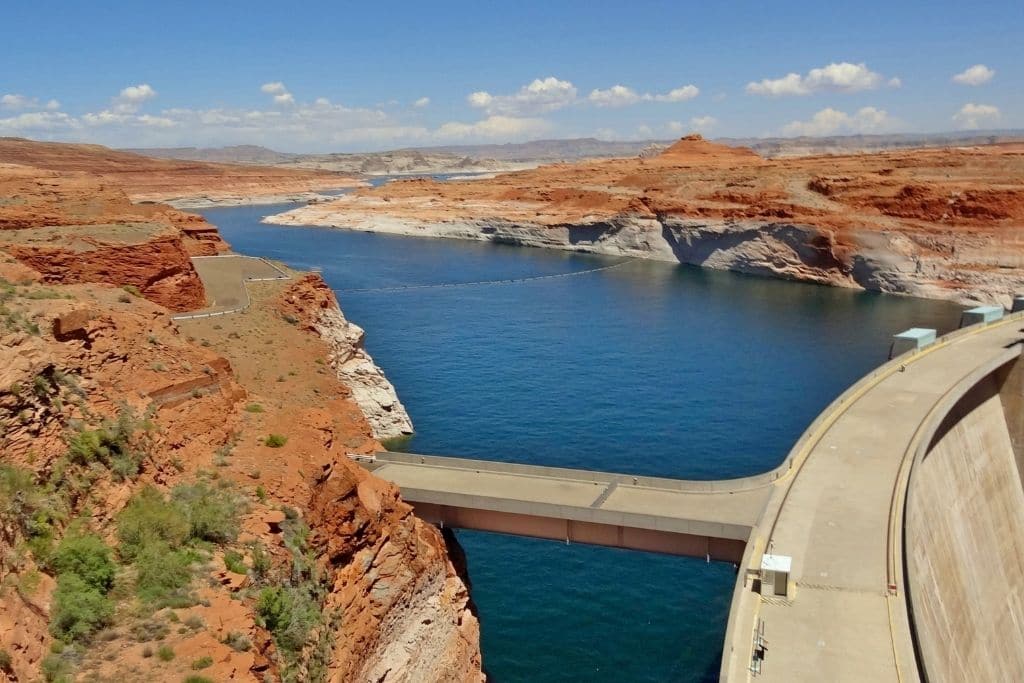Warming temperatures and prolonged droughts has driven Lake Powell water levels to drop down to critical low levels, raising concerns about the future of hydroelectric power generation in the region.
—
Lake Powell, located around the Arizona-Utah border and a major reservoir on the Colorado River, has dropped below a critical threshold, a sign that prolonged drought conditions and climate change is affecting the water cycle in the US.
The water levels at Lake Powell dropped below 1,075 metres (3,525 feet) on March 15, its lowest level since the lake was filled after the federal government dammed the Colorado River at Glen Canyon more than a half century ago.
The critically low water levels are linked to rapidly rising temperatures, less precipitation, and prolonged drought conditions affecting the southwestern region of the US. As a result, there is less water flowing from Lake Powell into the Colorado River, where an estimated 40 million people and dozens of communities depend on it for drinking water.
“The decline in Lake Powell reflects the mass balance problem for the reservoir, which means that inflows into Lake Powell are less than releases downstream of Lake Powell, which cause the storage in the lake to decline,” Chuck Cullom, the executive director of the Upper Colorado River Commission said in an interview earlier this week. He explained that the US is essentially “overdrawing the bank account” at Lake Powell.
You might also like: Lake Mead and Colorado River Basin Water Shortage: Causes, Effects, and Policy Solutions
Experts believe that the low water levels at the reservoir will only be temporary, and is expected to return to above target levels in spring when mountain snow in the Rockies melts and runs off into Lake Powell. But this recent low point demonstrated the impending risk to the Glen Canyon Dam and its ability to keep producing hydropower in the years ahead should this scenario becomes a common occurrence.
Hydroelectric power generation in general has been experiencing a decline in the US, in which worsening droughts are making it harder to meet demand. Today, hydropower accounts for more than one-third of the nation’s utility-scale renewable energy.
At the moment, the reservoir contains only about 25% of the water it was created to store. The declining water levels at Lake Mead has also affected its downstream partner Lake Mead, which recently announced its first-ever Tier 1 Water Shortage declaration, sparking water scarcity fears.
Despite assurances that the current critically low water levels won’t last, it’s clear that better climate adaptation is needed in the long run.


















